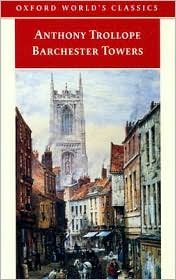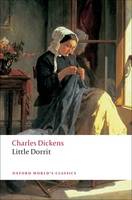
Eliot, George. 1871/1872. Middlemarch. 791 pages.
Miss Brooke had that kind of beauty which seems to be thrown into relief by poor dress.
Who is George Eliot? Mary Ann Evans, a woman writer in the nineteenth century who published many novels including Middlemarch, Silas Marner, Adam Bede, and A Mill on the Floss. Middlemarch is a long novel, quite a chunkster, and it does require commitment from the reader. It's a complex novel with many characters and many story lines. There isn't necessarily one story line that outshines all the others. I think how readers explain what it's all about has more to do with them than with the book in a way. If you're looking for a romance, you'll find the makings of it in Middlemarch, but it is so much more than a romance. If you're looking only for romance, you'll probably find it a bit boring. It addresses the complexities of the time in which it is set--the 1830s--we've got politics, economics, and society--especially society. To sum it up, Middlemarch is a novel about characters who have made really foolish choices and are having to learn to deal with them. Some adapt and change with grace and dignity. Others don't. Other's won't. Some let the weight of their mistakes drag them down. Of course, that doesn't quite describe all the book or all the characters.
Dorothea Brooke makes a big mistake in marrying a much older man, an incompetent scholar, Edward Casaubon, who transforms into a cruel, controlling, jealous man.
Fred Vincy makes a big mistake when he can't pay his debts. He convinces Caleb Garth, the father of the woman he loves, Mary Garth, to agree to pay his debts if and only he can't come up with the funds. Of course, his intentions are that the Garths won't be stuck paying off his debts. But well, you know what they say about good intentions...
Tertius Lydgate makes a big mistake when he marries Rosamond Vincy, a vain, shallow woman who's selfish to the core. I don't know if her selfishness can compete with let's say Scarlett O'Hara, but she's a horrible wife for this doctor!
Will Ladislaw makes a big mistake when he falls in love with Dorothea (she's married to his cousin)...and yet because he can't have the woman he loves...decides to fall into a flirtatious affair with Rosamond Vincy (another married woman).
And then there is poor old Nicholas Bulstrode. But that's a whole other story.
My good friend, Anonymous L, asks, "What did you think about the last lines of Middlemarch?"
I liked the bit about "the growing good of the world is partly dependent on unhistoric acts; and that things are not so ill with you and me as they might have been, is half owing to the number who lived faithfully a hidden life, and rest in unvisited tombs." I think it is very true.
Sandra asks, "Did you enjoy it? Is Middlemarch worth my time or is it just another book about women and romance?"
Yes and no. Don't let the 'and no' scare off potential readers. I thought the text bogged down here and there. It's hard for all readers to find all story lines of equal interest. And there were some chapters that bogged down (for me) in politics. Some characters had back stories that were complex and detailed. And not every chapter furthered the plot, in my opinion. That being said, there were moments where it was pure fun to be reading this book. Some of the best characters, in my opinion, were the minor characters. I liked Mrs. Cadwallader, Celia Brooke, and all of the Garths. And I rather liked Mr. Farebrother.
This isn't strictly speaking a romance though people do fall in love. It's more about what comes after. What happens after the wooing is over. What happens when the people you profess you love, disappoint you. What happens when you're sick and tired of being married and tied down.
It's a novel about expectations (ideals) and reality. And how reality has a way of slapping you in the face.
It's a novel that focuses just as much on men as it does in women.
Rebecca asks, "Is it worth the time and energy? What kinds of readers would be most likely to enjoy it?"
I think it depends on your timing. I think this one can be absorbing and draw readers in. And I think it can be intimidating in parts as well. I'm glad I read it. I liked parts of it. But I didn't like every part of it. I think patient readers will enjoy it. I think folks who are more into character-focused novels will enjoy it. It's a slower-paced novel. I think folks who already have an interest in classics would be more likely to enjoy it.
Eva asks, "Do you enjoy that device [of authors making interjections and asides to the reader] in novels...or does it snap you out of the narrative?"
I like it in certain novels. I think it can add a lot to some books. I didn't notice it as much in Eliot as I have in other novels I've been reading lately. (Though many of the lines I underlined were like this.) But I am love, love, loving it in my Anthony Trollope novels!
Jodie asks, "Is Middlemarch the first book by Eliot that you have read? How were the female characters in the book portrayed?"
I've also read and reviewed
Silas Marner. I hope to read more of Eliot in the upcoming years. As for how female characters were portrayed, I think there were diverse representations: all classes of women (lower, middle, upper). I hate to use the word 'types' but for lack of a better one...there were maternal types, pure-and-true-and-faithful types, understanding stand-by-my-man types, gossip-loving types, romantic and idealistic types, mean and spiteful types, shallow, vain, and selfish types. Some of the women characters were intelligent conversationalists, and others were more in the shadows of their husbands. Some women wanted to wear the pants in the family, others not so much. No doubt they'll be some characters you dislike. But you'll probably find some characters to like as well.
© Becky Laney of Becky's Book Reviews


















